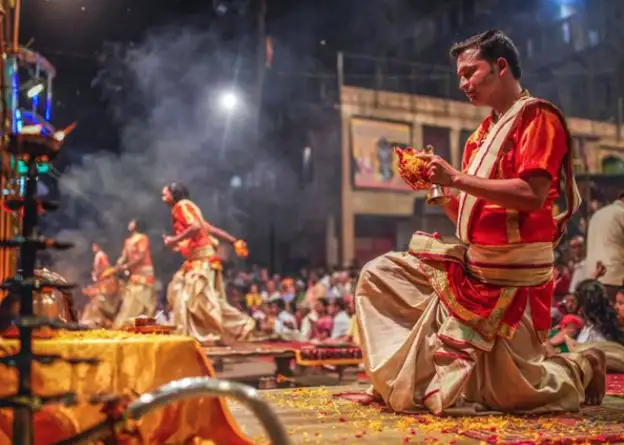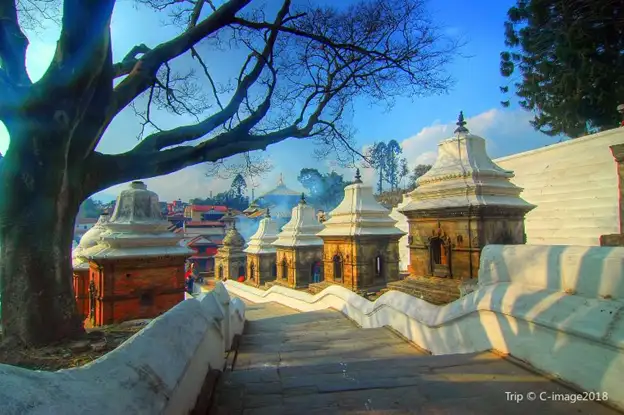The most important of 12 monthly celebrations held throughout the year, Maha Shivarati is a time for fasting, prayers and offerings. Unlike most Hindu festivals, this unique event is celebrated at night – just as Diwali celebrates light and color, its alter ego pays tribute to the dark, and the emptiness that comes before creation – a time when anything is possible.
If you're thinking about heading to India to celebrate Maha Shivarati, remember to book your flights and hotel at Trip.com…
What is Maha Shivaratri?
Maha Shivaratri is an annual Hindu festival, associated with fertility and family harmony. Taken from two words – Shiv and Ratri – it literally translates as "The Night of Lord Shiva" and is dedicated to the great Hindu god who creates, protects and transforms the universe.
When is Maha Shivaratri?
In India, the 14th day of every lunar month – the eve of the new moon and the darkest night of the month – is known as Shivaratri. Of the 12 Shivaratri that take place each year, Maha Shivaratri (which happens around February-March) is the one with the most potent spiritual significance.
Timed to coincide with the arrival of Spring, Maha Shivarati begins on the 13th night and 14th day in the last month of the Hindu calendar (usually around February or March, according to the Western calendar) and lasts for around 12 days.
This year the festivities begin on March 1, 2022. In 2023, Maha Shivarati will be on February 18, then in 2024 it will be on March 8, followed by February 26 in 2025, and February 15 in 2026.
Where does Maha Shivaratri usually happen?
This is one of the most spiritually important nights in the Hindu calendar, so it's marked all over India, and is a national holiday in some other countries too. On the subcontinent, enormous gatherings materialize in temples nationwide, but the biggest can normally be found in Ujjain, Madhya Pradesh, which is where Lord Shiva supposedly once stayed. Devotees flock to Shiva shrines all over India, especially in Tamil Nadu, Andhra Pradesh, and Uttar Pradesh.
Who celebrates Maha Shivaratri?
The festival is a great unifier of Hindu society. All castes, genders, ages, and social groups are joined in their collective worship. With its undertones of fertility and familial harmony, the occasion is an especially pertinent one for Hindu women.
What are origins of Maha Shivaratri?
The roots of the festival, and its modern significance, are entwined in ancient Indian mythology. According to legend, Maha Shivaratri marks the occasion when Shiva first performed the Tandava Nritya – also known as the dance of primordial creation, preservation, and destruction. It was through this dance of devotion that Lord Shiva saved the world from destruction.
Maha Shivaratri also marks the occasion of Shiva's marriage to the Goddess Parvati, and the day he became one with Mount Kailash. In the yogic tradition Shiva is revered, not as a God, but as the Adi Guru – the very first Guru from whom the science of Yoga originated. Maha Shivarati is a night of stillness and quietude, inspired by and devoted to the stoic grace and discipline of Lord Shiva.

Figure 2 Devotees perform 'Puja' (a series of sacred offerings and ablutions) during a night ceremony on the banks of the River Ganges in Varanasi, Uttar Pradesh
What rituals are associated with Maha Shivaratri?
The festival combines all-day fasting and an all-night vigil. During daylight hours, devotees rise early and take a ritual bath. After these ablutions, they will head over to the nearest temple dedicated to Shiva, to make offerings of milk, yoghurt, honey, ghee, sugar, and water.
In homes and temples throughout India, the sacred mantra of Shiva is chanted: "Om Namah Shivaya." Special Puja are held, during which incense is burned, lamps are lit, and streams of pilgrims continue to appear during the day and into the night. Through it all, devotees maintain a solemn fast until the following morning.
What is the meaning / explanation behind Maha Shivaratri?
Maha Shivratri is closely associated with fertility and creation. During the festival, unmarried women observe this fast in the hope that they will find a partner, while married women observe the fast to give thanks and maintain the balance of harmony in their marriage.

Figure 3 Hindu holy men, known as Sadhu, make pilgrimages to places of worship during the 12 days of Maha Shivaratri
What is the significance of the lingam and the bel tree?
Lord Shiva is commonly worshiped in the form of a symbol that represents creation – a lingam. Other common iconography or symbolism tied up with Shivaratri is the bel tree (or quince, which is native to India), as this was one apparently one of Shiva's favorites. Today, its leaves and fruit continue to play a central role in the festivities.
What are some common activities associated with Maha Shivaratri, in India and around the world?
Beyond India's borders, Maha Shivaratri is also a major event in Indo-Caribbean communities, where the night of devotion is solemnly observed in more 400 temples, and special cocktails known as jhalls (milk and curd, flowers, sugarcane and sweets) are offered up to Lord Shiva. In Mauritius, Hindu pilgrims set off to the island's sacred crater-lake, called Ganga Talao; in Nepal, where the festival is a national holiday, holy sites such as the Shiva Shakti Peetham and the Pashupatinath temple are thronged by devotees.

Figure 4 The Pashupatinath temple in Nepal - one of many places around the world where the festival is celebrated.
Maha Shivaratri means many things to many people. One of the central themes, which resonates most strongly among devotees, is the idea of "overcoming darkness and ignorance." This night of sacrifice, contemplation and quietude is therefore an embracing of darkness and emptiness, and a silent vigil for the return to lightness and creation to the world.
FAQ about Maha Shivaratri
-
Do I need a visa to visit India?
Yes. India offers an electronic tourist visa on arrival (TVoA). You can apply online a minimum of four days in advance of the date of arrival and the cost is US$60. The TVoA is valid for entry at 9 designated airports: Bangalore, Chennai, Cochin, Delhi, Goa, Hyderabad, Kolkata, Mumbai, and Trivandrum.
-
What currency is used in India?
The Rupee (1 Rupee= US$0.013) is the national currency of India.
-
Which is the nation's capital?
The capital city is New Delhi, which is also sometimes referred to as the National Capital Territory or simply NCT.
-
How many people live in India?
India has the second-largest population in the world, with an estimated 1.2 billion people.
-
What languages are spoken in India?
The official language of the Republic of India is Hindi, with English as a secondary official language. But there are hundreds of other languages spoken around the subcontinent.
-
What religions are observed in India?
The most common religion faiths in India are Hinduism, Islam, Christianity, Buddhism, Sikhism, and Jainism.
-
Who is the Prime Minister?
The current Prime Minister of India is Narendra Damodardas Modi.
-
Is it safe to visit India?
Considering its size, India has a relatively low crime rate and is generally a safe place to be. Locals are very friendly and welcoming, especially to foreign travelers. That being said, you should always be careful – make sure your money and ID are safely sealed in pockets, and beware of pickpockets in crowded places like train stations or markets.
-
What about the Covid-19 situation?
India was quick to close its borders to tourism at the start of the pandemic, banning all scheduled international flights in March 2020. However, these restrictions have since been lifted and the borders reopened to international tourism on November 15, 2021. Just recently, on February 14, the "at risk" list was scrapped, and India dropped its quarantine requirements.
-
What should I pack?
As the climate can change according to the season, your location, and the time of day, we recommend packing a few different layers. Comfortable walking shoes will also be useful for when you want to explore, while a light head covering may be required for women and men at certain sacred sites and places of worship.
